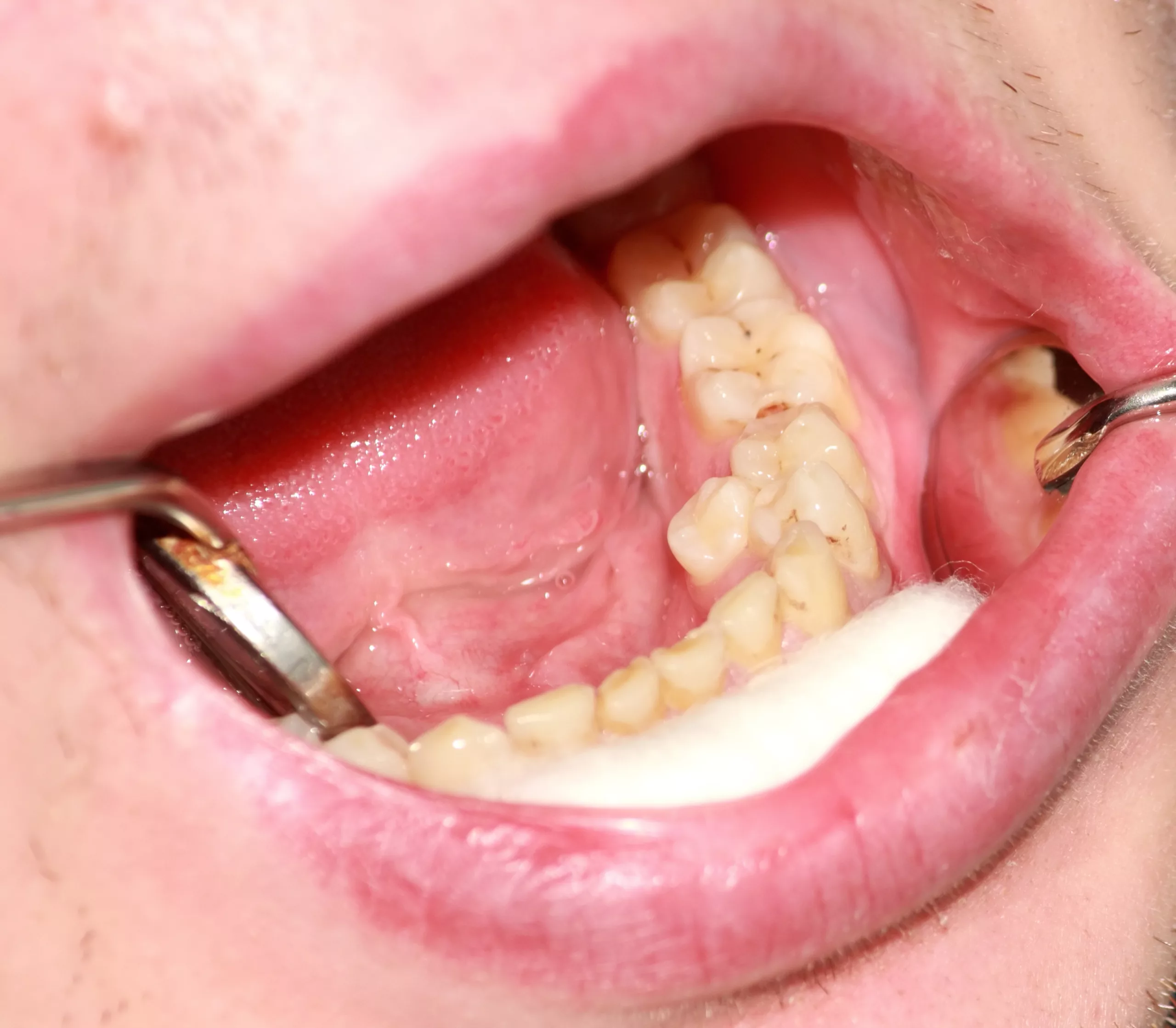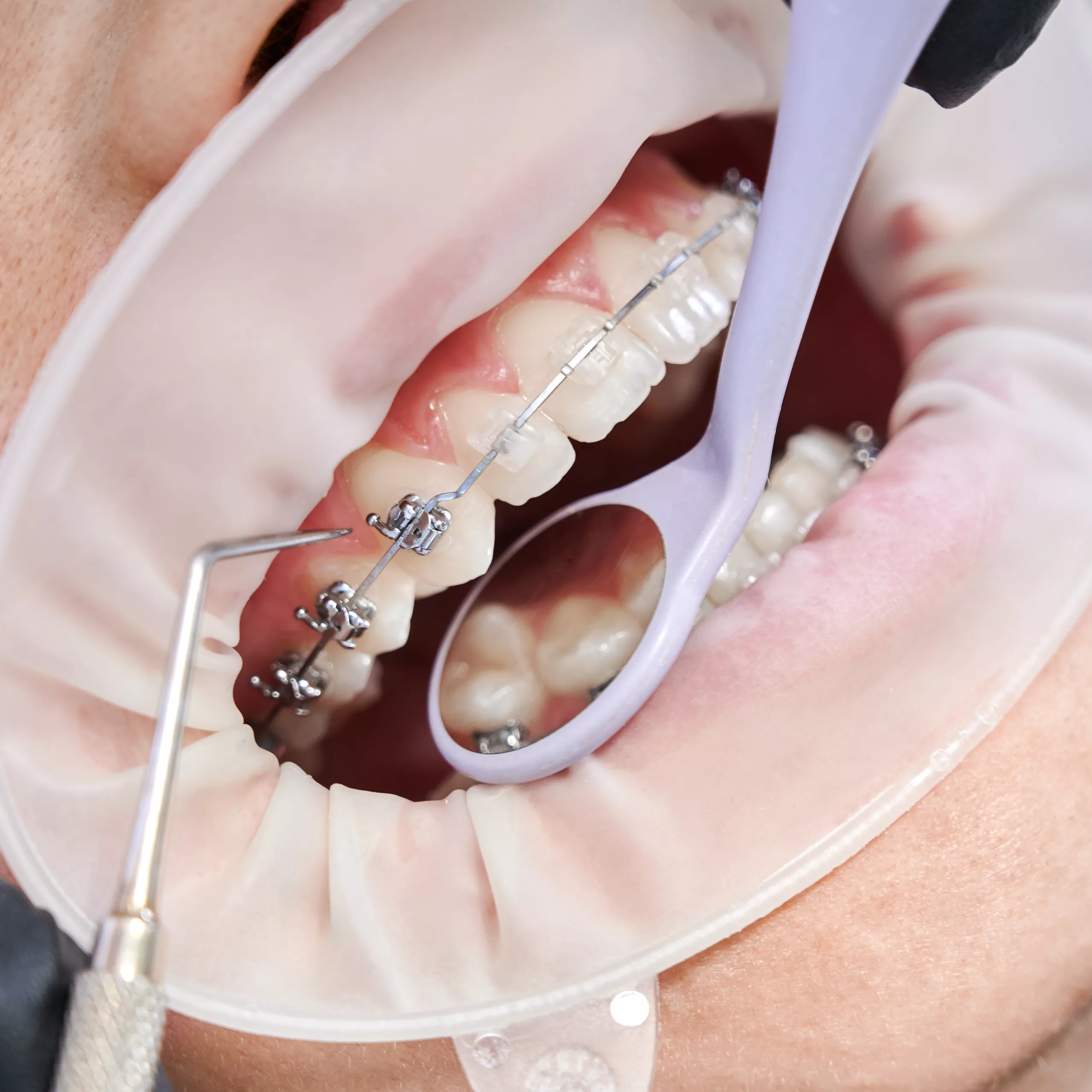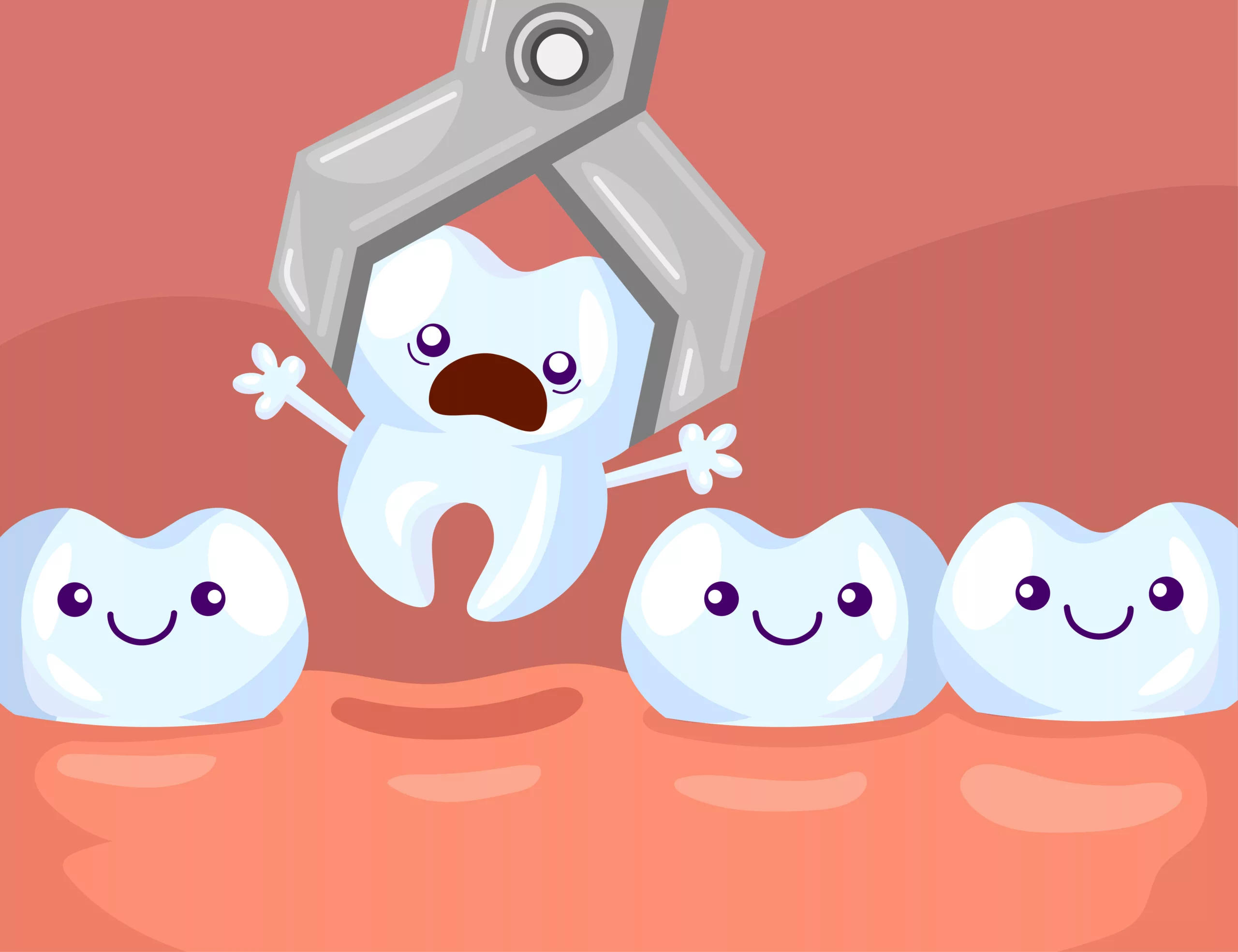Hyperdontia, also referred to as supernumerary teeth, is a dental condition characterized by additional teeth beyond the normal dentition. In the usual course of dental development, a child’s deciduous dentition consists of 20 teeth, while an adult human typically has 32 teeth in permanent dentition. However, when the number of teeth surpasses 20 in the deciduous dentition or exceeds 32 in the permanent dentition, the condition is recognized as hyperdontia. This means that more teeth are present than what is considered typical for a given stage of dental development.
What is Hyperdontia?
Hyperdontia is a condition of the teeth characterized by extra teeth in the oral cavity. There can be one or more additional teeth in the same or different locations.

Prevalence of Hyperdontia
The prevalence of supernumerary teeth varies greatly between 0.65% in orthodontic patients1Dzemidzic, V., Nakas, E., Gagula, I., Kozadra, J., & Tiro, A. (2020). The Prevalence of Hypodontia and Hyperdontia in Orthodontic Patients. Acta medica academica, 49(1), 51–56. https://doi.org/10.5644/ama2006-124.283. Hyperdontia is more prevalent in permanent dentition than the primary one. As far as gender is concerned, surprisingly, men are more affected by hyperdontia than women. The ratio is approximately 2:1.
Causes of Hyperdontia
Hyperdontia does not have a single, definite cause. Rather it has a wide range of reasons. Hyperdontia is usually the result of genetic aberrations, developmental abnormalities, various environmental factors, etc.
Genetic Factors
Many times we observe that the son and father both have an extra tooth at the same position in the mouth. Such an occurrence can be declared due to genetic aberrations. Traits like these often travel from one generation to another.
Environmental Factors
External factors like trauma, infections, and certain medications also, at times, result in additional teeth in the oral cavity.
Alterations in Tooth Development
At times during the period of tooth development, changes can take place in the dental lamina. If not the dental lamina, changes can also occur in the dental follicle development. Any such alterations can result in the formation of an additional tooth bud. Therefore, that additional tooth bud later converts into an extra tooth.
Genetic Syndromes
Various syndromes2Lubinsky, M., & Kantaputra, P. N. (2016). Syndromes with supernumerary teeth. American journal of medical genetics. Part A, 170(10), 2611–2616. https://doi.org/10.1002/ajmg.a.37763, like Gardner’s Syndrome, Ehler-Danlos Syndrome, Down’s Syndrome, etc., comprise hyperdontia as their main feature.

Common Types of Hyperdontia
The most common types of hyperdontia are stated below:
Mesiodens
Mesiodens3Russell, K. A., & Folwarczna, M. A. (2003). Mesiodens–diagnosis and management of a common supernumerary tooth. Journal (Canadian Dental Association), 69(6), 362–366. is the type of supernumerary tooth that is present between the maxillary central incisors.
Paramolar
A tooth that is smaller than the molar but has an occlusal anatomy almost similar to that of permanent molars.4Gündüz K. (2006). Supernumerary molars. British dental journal, 201(11), 688. https://doi.org/10.1038/sj.bdj.4814316 Their usual locality is around the permanent molars, mostly the second and third molars.
Distomolar
As the name suggests, distomolars are usually present on the distal side(the side of the tooth away from the midline) of the third molar. It can be present in either maxilla or the mandible, or both.
Hyperdontia Symptoms
Hyperdontia can be symptomatic or asymptomatic. Patients often ignore when these extra teeth do not cause any sort of pain. Extra teeth in the mouth need the attention of a dentist. Moreover, in some cases, the patients don’t even realize that they have an extra tooth; rather, it is an incidental finding during dental examinations and evaluations. However, it can present with these signs or complications.
Crowding
Crowding is one of the major symptoms of hyperdontia. It occurs due to an increased number of teeth present in a space designed only for 32 teeth. Patients with crowding usually present to dental clinics due to aesthetic concerns. Their aesthetics are mostly compromised. An orthodontist is the precise specialist to deal with the issue of crowding.
Delayed Eruption of Permanent Teeth
If hyperdontia presents in the primary dentition, it can hinder the eruption pathway of permanent teeth. Delayed eruption can result in malocclusion and crowding.
Impactions
At times, supernumerary teeth do not erupt completely. They remain partially erupted or do not erupt at all, resulting in impactions. This can cause severe pain. It can also result in mesial(towards the midline) or distal(away from the midline) inclination of the surrounding teeth. When this happens, the additional teeth are usually extracted.
Compromised Aesthetics
Having a perfect dentition with accurate spacing is usually pretty aesthetic. However, hyperdontia at times comes in the way. Crowding and malocclusion due to hyperdontia often awaken the patient’s aesthetic concerns. To restore their aesthetic smiles, patients opt for various types of orthodontic treatments.
How to Deal with Hyperdontia?
There are various steps that need to be followed before we can decide on the perfect treatment for hyperdontia. It is not necessary that if a person A requires an orthodontic treatment for hyperdontia, so should person B. Person B will have a treatment exactly according to the need of his dentition. Let’s go through the necessary steps of dealing with hyperdontia.
Comprehensive History
The first and foremost thing a dentist does is ask relevant questions. These relevant questions are an integral part of history taking and give the dentist a fair idea about the cause and treatment plan of hyperdontia. These questions are usually about the medical history, any other ailments, medical and dental history of the parents, etc.
Dental Examination & Investigations
Detailed intraoral and extraoral examination of the mouth, including the teeth, TMJ joint, facial muscles, and muscles of mastication. This helps in diagnosing hyperdontia.
Moreover, to make a definitive diagnosis, a full mouth radiograph, more commonly known as the OPG or a detailed oral scan known as a CBCT, helps in finding the exact orientation of all the teeth and detecting impactions, if any.
Treatment Options
The treatment options for hyperdontia depend on the specific characteristics of the condition, the number and location of supernumerary teeth, and the impact on the individual’s oral health. Some common treatment options include:
Orthodontic Treatment
For individuals with mild cases of hyperdontia, orthodontic treatment such as braces may be used to correct tooth misalignment and achieve proper occlusion. It usually includes the use of brackets, braces, aligners, and retainers to orient the teeth back to their natural and normal position for the restoration of aesthetics. Various extractions, normally of the premolars, are also recommended in such cases.

Extraction
Typically, dental professionals consider extraction as a last resort for dental diseases. However, they usually plan extraction when they cannot restore a tooth through orthodontic treatment or when the patient is unwilling to undergo orthodontic treatment. This unwillingness is often due to expenses and the need for frequent visitations. It’s important to note that extraction is performed only if hyperdontia causes symptoms or if the patient has aesthetic concerns.

Observation
In cases where the supernumerary teeth do not pose any immediate problems, regular monitoring and observation by a dentist or orthodontist may be advised.
Prosthetic Restoration
If the supernumerary teeth cannot be removed, they may be retained and incorporated into a prosthetic restoration to maintain proper function and aesthetics.
Conclusion
To sum it up, the presence of extra teeth in the mouth is known as hyperdontia. It can be symptomatic or asymptomatic. When it is asymptomatic, it requires no such treatment. However, if supernumerary teeth cause pain, affect aesthetics, interfere with tooth eruption, or pose other issues, they require treatment. Hyperdontia can be addressed through orthodontic treatment or extraction. Visiting the dental clinic during follow-up sessions plays a vital role in the entire treatment. Therefore, they must not be ignored!
Refrences
- 1Dzemidzic, V., Nakas, E., Gagula, I., Kozadra, J., & Tiro, A. (2020). The Prevalence of Hypodontia and Hyperdontia in Orthodontic Patients. Acta medica academica, 49(1), 51–56. https://doi.org/10.5644/ama2006-124.283
- 2Lubinsky, M., & Kantaputra, P. N. (2016). Syndromes with supernumerary teeth. American journal of medical genetics. Part A, 170(10), 2611–2616. https://doi.org/10.1002/ajmg.a.37763
- 3Russell, K. A., & Folwarczna, M. A. (2003). Mesiodens–diagnosis and management of a common supernumerary tooth. Journal (Canadian Dental Association), 69(6), 362–366.
- 4Gündüz K. (2006). Supernumerary molars. British dental journal, 201(11), 688. https://doi.org/10.1038/sj.bdj.4814316

